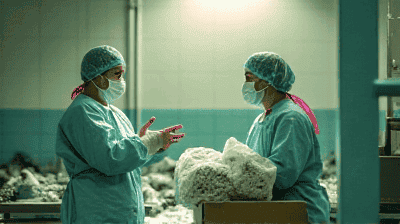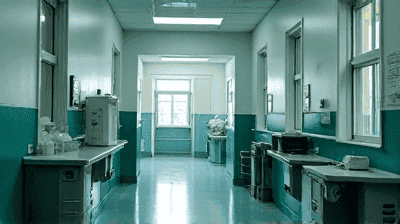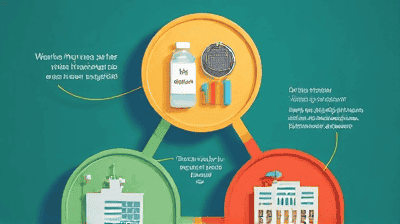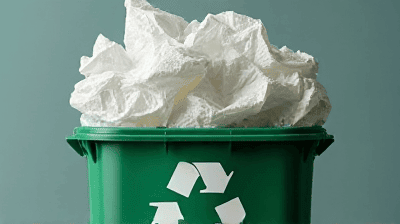
Medical waste management is a critical issue that affects public health and the environment. As healthcare facilities generate substantial amounts of waste, much of which can be hazardous, proper disposal methods are essential to prevent contamination and health risks. Medical waste refers to any waste that is generated in the diagnosis, treatment, or immunization of humans or animals, and includes a variety of materials, such as used needles, contaminated supplies, and pharmaceuticals. Mismanagement of this waste can lead to dangerous consequences, including disease transmission, environmental pollution, and increased healthcare costs.
In recent years, hospitals and healthcare institutions have taken significant steps to improve waste management practices. By implementing innovative disposal methods, employing advanced technologies, and promoting sustainable practices, healthcare providers are addressing the dangers associated with medical waste.
Medical waste can be broadly categorized into several types based on its origin and hazard level:
Infectious Waste: This includes materials that may carry infectious pathogens, such as blood-soiled items, cultures from laboratory studies, and tissues removed during surgery.
Sharps Waste: Comprising items capable of causing injury or infection, sharps waste includes needles, scalpel blades, and broken glass.
Pathological Waste: This type pertains to human or animal tissues, organs, and fluids that are removed during surgery or autopsy.
Pharmaceutical Waste: Includes expired, unused, or contaminated medications, which may have adverse effects if not disposed of properly.
Chemical Waste: Comprising hazardous chemicals and disinfectants, this type of waste is generated during diagnostic and therapeutic procedures.
Radioactive Waste: Produced from radiation therapy and certain diagnostic procedures, this waste poses unique challenges due to its potential to generate harmful radiation.
The management of medical waste is governed by various regulations at the local, national, and international levels. In the United States, the Environmental Protection Agency (EPA) and state agencies oversee medical waste management practices. In addition, organizations like the World Health Organization (WHO) provide guidelines for safe management and disposal of medical waste globally. Compliance with these regulations is crucial for hospitals to minimize risks associated with medical waste.

Improper disposal of medical waste can pose severe health risks to healthcare workers, patients, and the community at large. The following are some key public health concerns:
Infection Transmission: Sharps waste, when not disposed of properly, can lead to needlestick injuries, exposing workers and others to bloodborne pathogens such as HIV, hepatitis B, and hepatitis C.
Contamination of Water Sources: Pharmaceutical waste improperly disposed of can lead to chemical contamination of water supplies, posing risks to both human health and aquatic ecosystems.
Environmental Hazard: Infectious and chemical waste can degrade soil quality and harm local wildlife, leading to broader ecological imbalances.
Hospitals that fail to comply with medical waste disposal regulations may face legal repercussions, including hefty fines and lawsuits. Moreover, mismanagement can lead to increased operational costs, additional staff training requirements, and potential loss of reputation.
The awareness of potential hazards associated with medical waste can generate anxiety in healthcare workers and the general public. This psychological stress may affect the overall morale of healthcare professionals and trust in healthcare systems.
To tackle the dangers of medical waste, hospitals are implementing improved disposal methods across various areas:
One of the first critical steps in effective medical waste management is proper segregation at the point of generation. By classifying waste into suitable categories, healthcare facilities can ensure that waste is disposed of according to its type. Key strategies include:
Color-Coded Containers: Many hospitals use color-coded bins to distinguish different waste types. For instance, red bins may be used for infectious waste, while sharps are kept in rigid, puncture-proof containers.
Training and Awareness: Regular training programs for staff on waste segregation practices ensure that everyone understands the importance of effective waste management and follows protocols.
Innovations in disposal technologies have made it possible for hospitals to manage medical waste more safely and effectively. Some of these technologies include:
Autoclaving: This sterilization method uses steam under pressure to kill pathogens in medical waste. Autoclaved waste can often be disposed of as regular trash, making it a safer option.
Microwave Treatment: This method employs microwave radiation to sterilize waste, rendering it non-hazardous. After treatment, the waste can be safely landfilled or recycled.
Chemical Treatment: Some hospitals use chemical solutions to disinfect waste before disposal, particularly for pharmaceuticals and certain hazardous materials.
Sharps pose significant risks due to their potential to cause injuries and infections. Hospitals are adopting improved strategies for safe sharps disposal, such as:
Needle Exchange Programs: Some facilities offer needle exchange programs that allow patients to return used needles, promoting safe disposal and reducing the chances of needle-stick injuries.
Portable Sharps Containers: Providing portable containers for sharps disposal at various points of care improves compliance among staff and encourages safe practices.
Hospitals are increasingly focusing on waste reduction and recycling to minimize the volume of hazardous waste they generate. Key initiatives include:
Inventory Management: Reducing over-purchasing of supplies helps limit expired products and minimizes pharmaceutical waste.
Reusable Products: Utilizing reusable medical products can significantly reduce waste. For example, using cloth surgical wraps instead of single-use alternatives limits disposables.
Material Recycling: Institutions are starting to recycle materials, such as plastics and metals, from medical equipment packaging and other sources to minimize landfill contributions.
Community involvement plays a significant role in medical waste management. Hospitals are increasingly engaging with the community through educational initiatives that promote awareness of safe disposal methods and the importance of proper waste management. These initiatives include:
Public Workshops: Offering workshops to educate the public on the safe disposal of medications and household hazardous waste can enhance community engagement.
Collaboration with Local Governments: Partnerships with local authorities can facilitate curbside pickup programs for hazardous household waste, ensuring safe disposal.
Conducting regular waste management audits allows hospitals to identify areas for improvement and ensure compliance with regulations. Assessment practices include:
Monitoring Waste Streams: Tracking the types and volumes of waste generated can highlight opportunities for reducing hazardous waste production.
Evaluating Disposal Practices: Assessing disposal methods enables hospitals to adjust their strategies and invest in new technologies when necessary.

Cleveland Clinic has established comprehensive waste management programs that prioritize medical waste reduction and proper disposal. The facility uses a combination of advanced technologies, such as autoclaving and chemical treatment for its medical waste, while also employing an effective waste segregation system.
Results: Leveraging these strategies, Cleveland Clinic achieved a significant reduction in waste generation and improved compliance with regulations.
Kaiser Permanente has adopted a multifaceted approach to medical waste management, focusing on sustainability and community involvement. The organization has implemented robust recycling programs and education initiatives for both staff and community members.
Results: The initiative has led to a decrease in medical waste generation and an increase in recycling rates, contributing to a healthier environment and enhanced public awareness.
Johns Hopkins Hospital has developed waste management programs that emphasize reusable items and rigorous training. The facility has incorporated an extensive reusable medical products initiative and regularly engages staff in educational activities related to waste management.
Results: As a result, the hospital has reduced its medical waste output considerably, while saving costs associated with waste disposal.
As healthcare institutions recognize the importance of sustainability, future medical waste management practices will likely become more integrated with broader environmental initiatives. Hospitals will need to focus on reducing their ecological footprint by adopting sustainable practices that minimize hazardous waste generation.
Advancements in waste management technologies will continue to play a crucial role in improving the safety and efficacy of medical waste disposal. Future developments may include:
Ongoing discussions around healthcare regulations may result in stricter guidelines and requirements for medical waste disposal. Healthcare institutions will need to adapt to these changes while continuing to implement best practices.
Public awareness and advocacy will play a vital role in shaping medical waste management practices. As more consumers become aware of the dangers associated with medical waste, they may demand better practices from healthcare providers and support initiatives that prioritize sustainability.

The dangers posed by medical waste cannot be overstated. Inadequate disposal methods can result in severe health, environmental, and financial repercussions. However, hospitals and healthcare facilities are taking significant steps to improve their waste management practices. Through better waste segregation, advanced technologies, safe disposal methods, and community engagement, healthcare providers are addressing the challenges associated with medical waste.
As we look to the future, it is essential for the healthcare industry to continue prioritizing sustainable practices while ensuring compliance with regulations to protect public health and the environment. By investing in innovative solutions and raising awareness, we can work together to create a safer and healthier world for everyone.